The idea of productisation among service companies is a common one but servitization may be a less familiar term to people. Can you explain what you mean?
Servitization is a relatively new term used to describe the trend for product-based firms to wrap high-value service layers around their offering. To be clear, it is not to be confused with simply enhancing your customer service. This is about adding fundamentally new services to increase the value delivered and differentiate your proposition.
We recently ran a webinar with the Servitization expert, Tim Baines, who identifies different levels of this process. At the basic and intermediate levels, services support the product like spare parts and automated repair requests. Advanced level services refer to manufacturers bundling services with the product to come up with what he describes as “a more adventurous business model”. Rather than selling things, the advanced services model is centered around selling capabilities, often in the form of a subscription.
A great example is Goodyear – an organization moving from selling tires toward selling the capability of keeping a truck on the road. Likewise Canon aren’t simply looking to sell photocopiers anymore; they are selling a number of pages and they wrapping that product in value-add services.
What’s driving this trend?
The governing factor is the customer. There is more competition than ever and companies have to get closer to their customer if they are to be sticky. Historically, product companies have taken a very direct approach to selling but the customer is now too well informed and has too many options, so suppliers have to be able to offer more if they are to avoid being commoditised.
The governing factor behind servitization is the customer.
A lot of this is driven by our experiences in the consumer space. I pay for my Netflix on a monthly subscription, for example, which means I have access to a vast array of content without any big up-front costs. Now people want the same from their suppliers. Amazon Web Services is one of the best examples of this democratisation of services. Not so long ago only really huge companies would have been able to access this kind of resource, but now any business on the planet can tap into highly advanced web services at a really affordable rate.
What role does technology play in this?
Technology and data are the key to making this all possible. For example, train manufacturers are moving to sell not trains but passenger miles, plus services like wifi, food, and travel packages with the intent to optimize train frequency, seats, ticket prices, and so on. This all comes down to its ability to capture, organise and harness data.
Servitized product businesses are increasingly looking to harness the power of AI, professional services automation, and other technological solutions to drive success and help to build closer connections with their customers.
Does this present any new challenges for these firms?
It certainly presents a challenge around pricing. When you’re pricing a product, you calculate your costs and add a margin. But if you’re now charging by page or by the hour, you’ve got to completely remodel your pricing structure.
It may mean completely rethinking existing financial models.
In particular, the revenue is going to have a much slower lead time than the business is used to. It may add up in the long term, but the business won’t have those big lumps of cash coming in up-front, so it may mean completely rethinking existing financial models.
And what about service firms productising their offering?
Again, it comes back to the customer. The customer is challenging those firms to think differently. They used to have to buy on an hourly rate or maybe a fixed price, but now they’re asking to buy on a consumption or outcome basis.
The customer may even ask to work on a risk/reward model, in which the supplier absorbs some of the risk but there is a bonus based on a positive outcome. After all, all the customer really cares about is that outcome.
If managed poorly, this remodelling of the pricing structure can create huge problems for the supplier, but if it’s managed well they can use it to decouple their revenue from their cost base in a way that creates a much higher margin.
A common way to achieve this of course is through the use of IP, so that you’re not simply buying the service but the service plus some further asset that adds significant perceived value to the customer, but without raising the unit costs to the supplier.
If it’s managed well they can use it to decouple their revenue from their cost base in a way that creates a much higher margin.
A lot of companies are still in denial about this productisation and believe that their expertise is such a scarce resource that there will always be demand to buy services by the hour. The question to ask is this – is the status quo good for the customer? If it is then fine, but if not, then it’s only a question of when the change comes, so you can either hold out for as long as possible, or you can make the change now and do something really special while the rest of your market is clinging to the past.

How do you think this trend impacts sales and marketing?
It’s all about become more customer-centric and that of course needs to be reflected in your communications. You need to talk in their language and focus on outcomes.
It also means you need a service/product catalogue that’s broad enough to work for your market, because we mustn’t assume that all customers are the same. Some will still want to buy their products and services the same way they always have, and it’s part of the qualification and discovery process to establish where on that product-service spectrum they want their solution to sit.
As the buyer has become more sophisticated, the selling process has become more complex. It’s therefore really important that your sales team is not only equipped with powerful insights from their marketing function so that they can educate the customer and avoid being perceived as commodity, but that they are also in possession of a high level of emotional intelligence so that they can simultaneously build rapport whilst creating tension – punch them whilst putting their arm around them, so to speak.
Clearly this is a really big topic with few easy answers. If you were to advise these companies on nailing one thing, what would it be?
Every market is different and every customer within that market is different, so we have to be careful not to generalise. What’s really important is to understand that the days of creating an offering and telling your audience that they need to buy it are over. Customers are too well educated and the problems they are trying to solve are too complicated. You need a clear but sufficiently broad offering and well informed, emotionally intelligent sales people to navigate what is now a highly complex and consultative buying journey.




